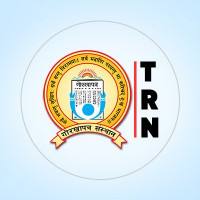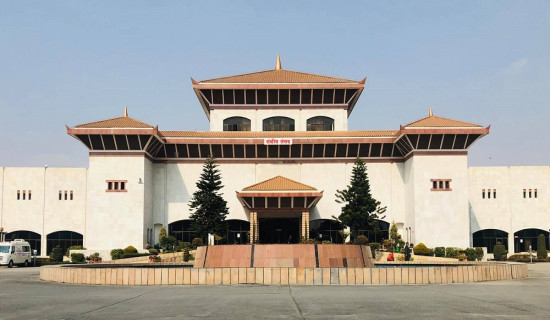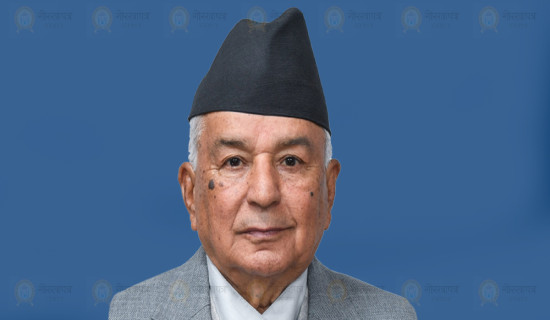- Friday, 25 July 2025
Risk Of Eating Wild Mushrooms
Spring signals the start of wild mushroom growing season and so does the mushroom poisoning. Since ancient times, wild mushrooms have been gathered for consumption throughout the world and occasionally, many people may have become ill or died when they inadvertently consumed poisonous mushrooms. In Nepal, poisonous mushrooms kill hundreds of people every year. Oftentimes the whole family members are involved and suffer from its toxicity and many succumb to death.
Ingestion
Mushroom poisoning occurs as a result of ingestion of wild mushrooms due to misidentification of a toxic one as an edible variety. Toxic varieties of mushrooms often resemble, in terms of colour and morphology, as edible ones. So, even the experienced mushroom hunters may misidentify toxic mushroom species with edible ones. Around 1.5 million species of fungi inhabit the earth. Of them, some 140,000 species are categorised as mushrooms. About 200 mushroom species are experimentally grown, 100 species economically cultivated, 60 commercially cultivated and 10 have reached industrial status. Furthermore, around 2000 mushroom species are regarded as medicinal mushrooms with a variety of health attributes.
Some 30 species of mushrooms or one per cent of the total mushroom species, are considered to be potentially toxic and often lethal. Nepal is home to many varieties of wild-growing mushrooms. Many of them are edible. However, a few varieties grown wild are poisonous or even deadly. Mistaken identity is the most common reason for the consumption of toxic mushroom. The common concept that all white mushrooms are safe to eat is wrong and may result in toxicity. One dangerous white mushroom that is poisonous is called the “destroying angel.”
People have misconception that heating the poisonous mushroom and stirring it with a silver spoon will draw the poison out of it and silver spoon turns black is a myth. Many people believe that mushroom is safe to eat once it is completely cooked is also another myth that you should not try, because you may become severely ill and even die. Contrary to popular belief, there is no simple test that can distinguish edible variety from poisonous one.
There is a common misconception that poisonous mushrooms taste bad. But contrary to this belief, mushroom that is tasty can still be poisonous. Another common myth is that poisonous mushrooms are red in color but poisonous one can be of any color indeed. People in many countries think that mushrooms grown in groups are safe to eat. Some ethnic people even have the misconception that the first picked mushroom should be offered to God so that subsequent mushrooms will be safe to eat.
Mushroom poisoning occurs from eating wild mushrooms mistakenly identified as safe and edible. Misidentification of wild mushrooms happens when the general appearance, like the colour, of a poisonous mushroom, closely resembles that of a safe one. There is no simple rule for distinguishing edible mushrooms from poisonous varieties. In most of the poisoning cases, misidentification leads to mushroom poisoning by an amateur mushroom hunter. Poisoning may also occur after the mushroom is consumed by the people for recreation as few of the mushrooms has psychedelic properties. The only way to tell whether a wild mushroom is safe to eat is to have it identified by a mushroom expert and it has been said that mushroom can fool even the expert mycologist.
Poisonous mushrooms contain a variety of toxins that can range from self-limiting toxicity to fatal one. Symptoms of mushroom poisoning ranges from self-limiting gastric upset to organ failure and may result in death. Serious symptoms do not always occur immediately after eating, often not until the toxin affects the vital organs such as the kidney or liver, sometimes days or weeks later. In the absence of a definitive identification of the mushroom, all symptomatic mushroom ingestions should be considered serious and possibly lethal. The simple rule of treatment of mushroom poisoning is to consider it serious and possibly lethal. Once mushroom toxicity is diagnosed, treatment is largely symptomatic and supportive.
Symptoms associated with mushroom poisoning vary with the type of mushroom eaten. Many wild mushrooms may cause vomiting and diarrhea; which could lead to dehydration and an emergency room visit. Some interact with alcohol to cause severe stomach upset, headache, and results in high blood pressure. Some species can cause hallucinations and coma. A few cause no effects right away and for up to 24 hours, but can damage the liver; a liver transplant may be necessary to survive.
Awareness
Public awareness is the key to preventing wild mushroom poisoning. It is, therefore, recommended to carry out awareness campaigns in hilly areas of the country in order to prevent hundreds of deaths due to poisoning following wild mushroom consumption.
The best way of prevention from toxicity is to avoid eating wild mushrooms if you are unsure of its safety. It is important to remember that not to experiment on eating wild mushrooms which may turn into our last meal. Thus, it is recommended that to eat mushrooms bought from the reliable source only.
(Dr. Lohani is the clinical director at the Nepal Drug and Poison Information Centre. lohanis@gmail.com)












-original-thumb.jpg)




